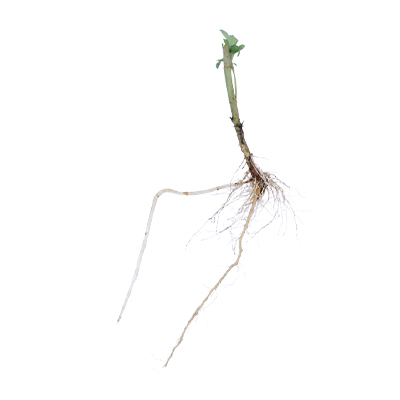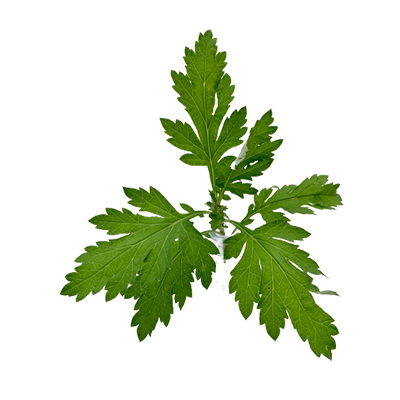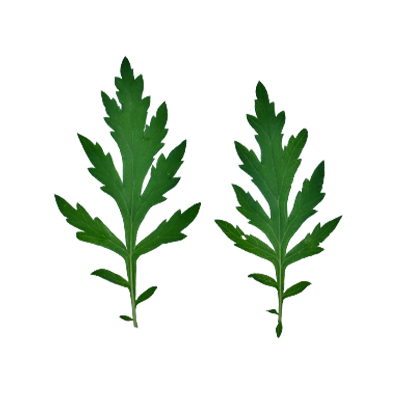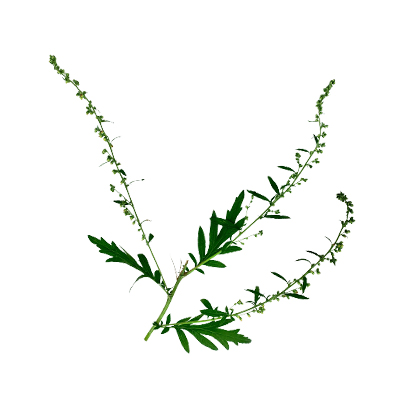Mugwort
Artemisia vulgaris L.
Asteraceae
Location in our garden
Principal
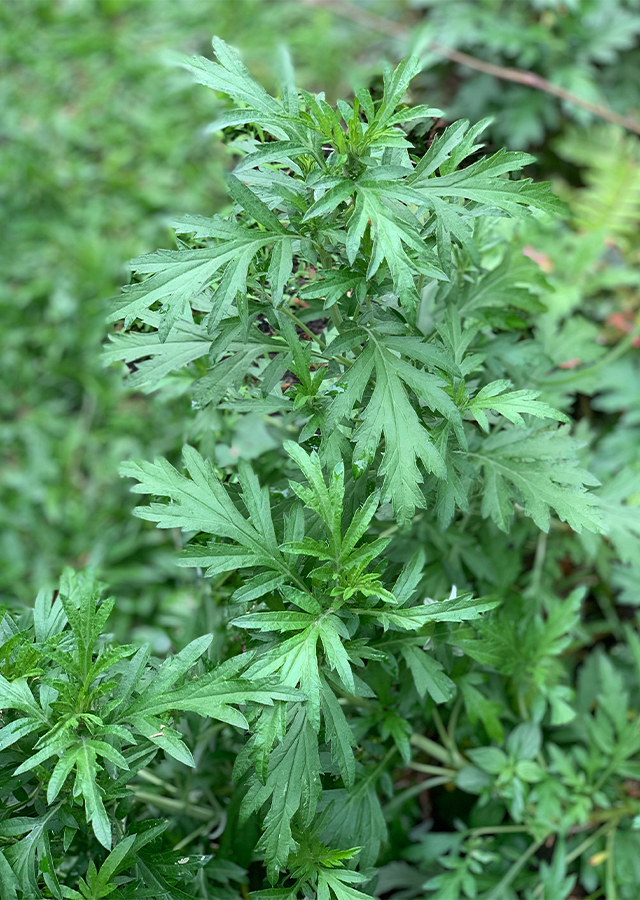
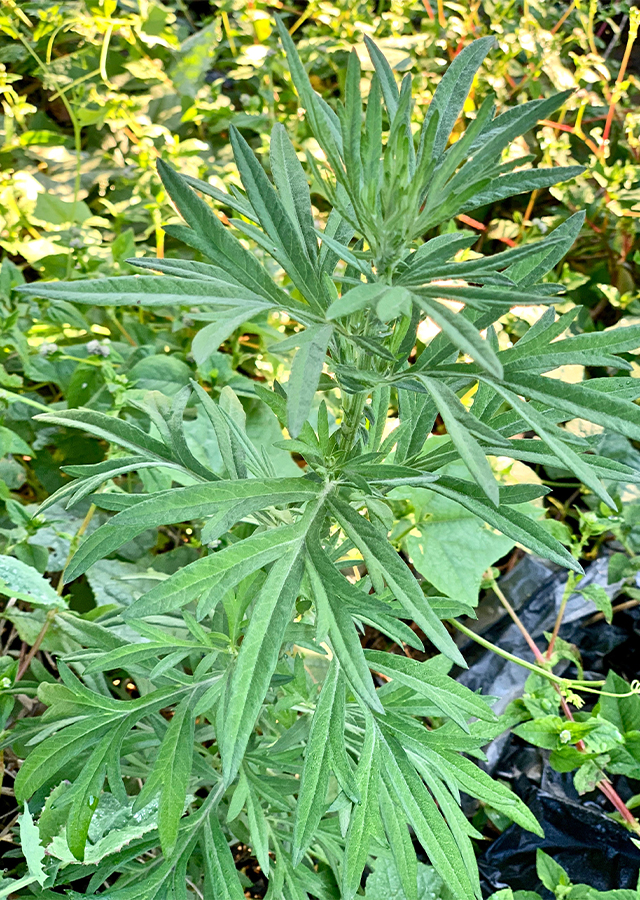
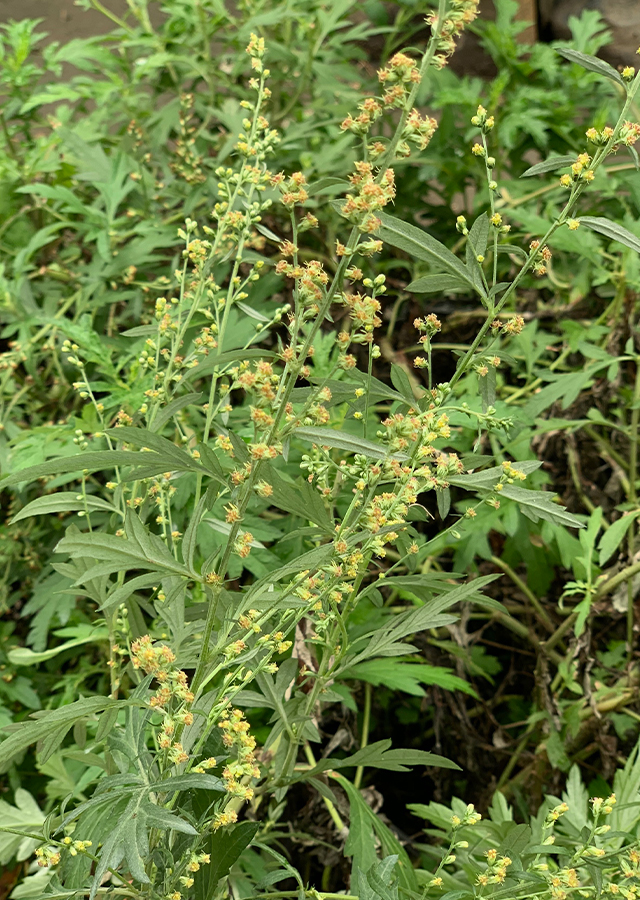
Synonym
Absinthium vulgare (L.) Dulac
Artemisia coarctata Forselles
Artemisia vulgaris var. coarctata (Forselles) Hartm.
Habitus
Herbaceous. An erect perennial herb, hairy, aromatic, rank smelling, often half-woody, growing to a height of 1 m or lessArtemisia vulgaris is a herbaceous plant. Fresh plants have a spicy-bitter taste. The species A. vulgaris shows high morphological variability depending on the place of occurrence.
Part Used
Leaves
Seeds
Flowers
Roots
Growing Requirements
Full Sunshine
Drought Resistant
Habitat
Shrublands
Grassland
Overview
Mugwort is native to Europe and Eastern Asia, where it has historically been used as a medicinal herb. Seed may have been first introduced to North America as early as the 16th century by Jesuit missionaries in Canada. In many areas, considered a noxious weed, extremely invasive and aggressive and difficult to eradicate once established. Wide-spread throughout temperate regions of the Northern Hemisphere and cold temperature zones, especially in the moderate climate zones of Europe, East Asia, Americas, North Africa, and Australia. Mugwort is common throughout lowland Britain. In an early survey of Bedfordshire and Norfolk it was distributed on light calcareous soils. Colonies can persist for many years. In the vegetative state the plant has the appearance of a garden chrysanthemum. It is grown wildly in semiarid or arid areas throughout the Mediterranean basin and extending into the north-west Himalayas.
Vernacular Names
Ye ai (Chinese), Arutemishia (Japanese), Cây ngải (Vietnamese), Majtari (Hindi), Armoise citronnelle (French), Amarella (Italian), Artemisia (Spanish), Damong maria (Tagalog-Philippines), Armoise vulgaire (French). Baru Cina (Indonesia), Carline Thistle, Chiu Ts’Ao, Chrysanthemum weed, Cingulum Sancti Johannis, common wormwood (English), Ajenjo, Altamis, Altamisa (Spanish), Altamiza (Italian), Beiai (Chinese), Beifußkraut (German), Nagadamani (Ayurvedic), Moxa (Japan), and Polynesian snare (Russian).
Agroecology
This species is widely considered a weed. It can be found in many habitats, for example, on roadsides, along rivers, or in abandoned mines, thickets, tree nurseries, and arable or other fields, where it interferes with the growth of different plants. It grows in waste areas, very often forming dense colonies. Mugwort is associated with fertile but disturbed situations and tolerates a range of soil types and pH levels. It is native hedgerows. Individual populations of A. vulgaris are well adapted to live in a wide range of pH and various soil types, including sandy and loamy. Due to its extensive root system, this plant can quickly occupy large areas. As a species with low requirements, A. vulgaris can easily colonize successive sites and displace native species. Thus, it can easily disturb the local ecosystems.
Morphology
- Roots - The plant has a thick main root and many small, fibrous lateral roots. The roots take on a light-brown color and measure up to 1 cm. They remain in the upper layer of the soil, at a depth of 7–18 cm, forming a vast, underground network
- Stems - The stems of the plant are slightly wavy, straight, having a brown color at the lower end, and become woody with age, appearing green further up and purple at the top. Stems are erect, corrugated lengthwise (< 1 mm), tending to be green to brown towards the lower base, typically 0.25–1.5 cm, usually measure about 30-60 cm tall, tufted from the stolon and branched are often whitish and hairy.
- Leaves - appearing stipulate at the base, lower to middle leaves with blade elliptic in outline, measure 5-11 cm x 3-7.5 cm, pinnately lobed or divided into 2-4 pairs of segments.The leaves are set densely, and alternately, primarily in the upper parts of the stem. The lower leaves with short petioles and take on a feathery shape. The dorsal side of the leaves has a dark green color, while the ventral side is whitish and tomentose.
- Flowers - are absent, while disc flowers at blooming are very small (inconspicuous), reddish or greenish yellow and bisexual at the center of each head but may occasionally be just female on the periphery. Flowers are embedded in small baskets that form heavily branched panicles with numerous lanceolate bracts at the top of the shoots. One basket may contain around 15–30 flowers with numerous stamens. Flower heads are ovoid, 3–4mm long by 2mm wide. The numerous flowers are short and stemmed erect or slightly drooping. The flowers are yellowish or red brown and almost glabrous.
- Inflorescence - a terminal panicle of crowded racemes, the heads 0.25 cm long and the florets are brownish. Inflorescences are contain 52% of ligulate flowers and 48% of tubular flowers, of which 25–50% are female. The flower heads (2.5–3 mm wide) can be nearly sessile or peduncled, seriate or fascicled.
- Fruits - minute achenes.The fruit has an indistinct margin
- Seeds - ridged brown, oblong (1-2 mm long) with a narrow base and have minute bristles at the apex.
Cultivation
- It might reproduce from seeds. Normally, propagation in this species occurs principally via fragments of the shallow rhizomes which gave transplants (herbaceous cuttings) of about 10-15 cm long.
- The seeds exhibit some dormancy. Light and alternating temperature were synergistic in increasing germination, chilling helped too. Seeds gave 14% germination at alternating temperatures in the dark but this increased to 44% under a ‘safe’ green light. There was just 2% germination at a constant temperature in darkness. When seeds were put to germinate under a leaf canopy or in diffuse white light there was no germination under the leaf canopy and 30% in the light.
- There was just 2% germination at a constant temperature in darkness. When seeds were put to germinate under a leaf canopy or in diffuse white light there was no germination under the leaf canopy and 30% in the light. Germination was faster in seeds that had been dry-stored. Seed germination is stimulated by soil cultivation.
Chemical Constituents
Essential oil, alpha-amyrin, fernenol, dehydeomatricaria ester, cineol, terpinen- 4-ol, 1-kuebrasitol, inulin (artemose), tannin, oxytocin, yomogi alcohol, ridentin, skopoletin, isoskopoletin. Scoparone is a derivative of coumarin, flavonoids, sesquiterpene lactones, phenolic acids, sterols, polyacetylenes, carotenoids, vitamins, and cyanogenic glycosides, including psilostachyin, psilostachyin C, and vulgarin, flavonoids—derivatives of kaempferol and quercetin. A major part of the oil extracted from the aerial parts is constituted by monoterpenoids and sesquiterpenoids. Among the volatile compounds, the following are the most commonly identified: 1,8-cineole, sabinene, camphor, camphene, α-thujone, β-thujone, and β-caryophyllene oxide. The main compounds in the oil extracted from the root were neryl 2-methylbutanoate, β-eudesmol, and bornyl 3-methylbutanoate. The underground part of the plant also contained some rare compounds belonging to, inter alia, the group of tricyclic sesquiterpenoids, such as (−)-α-isocomene, (−)-isocomene, silphin-1-ene, presilphiperfol-7-ene, and modhephene.
Traditional Medicinal Uses
- Plant is considered as a valuable stomachic, anthelmintic, emmenagogue, deobstruent, antispasmodic, tonic.
- Leaves and flowering tops are considered as a stimulant, antispasmodic and emmenagogue.
- Mugwort is used to stimulate gastric juice and bile secretion, also used as a liver tonic, to promote circulation, and as sedative.
- Other uses include treatment of hysteria, epylepsy, and convulsion in children.
- The plant gained popularity as a remedy for gastrointestinal ailments “resulting from cold”, including diarrhea, and intestinal colic. It was believed to be effective against jaundice when served with wine and against goiter when applied as a poultice.
- In addition to women’s diseases, the therapeutic spectrum of A. vulgaris was expanded to include spleen and liver diseases. Additional recommendations appeared “for enlarged and distended spleen”, “against clogged liver”, and “for cold lower abdomen”.
- The essential oil exhibits many other biological activities useful in food science such as antiseptic, antioxidant, larvicidal, nematicide, pesticide, antibacterial, antifungal, and antiviral,
- Mugwort has also antitumoral activity which is mainly linked to artemisic acid and artemisinin B.
- Women take mugwort for irregular periods and other menstrual problems.
- Juice of leaves is used as vulnerary, to heal wounds and cuts.
- Decoction of dried leaves is used for asthma and dyspepsia.
- Stimulates appetite, young leaves are used for anorexia.
- Used as infusion and electuary for obstructed menses and hysteria.
- Externally, used as alterative as fomentations for skin diseases and foul ulcers.
- Expressed juice of plant is applied to the head of children to prevent convulsions.
- Use as antimalarial and antidiabetic aids, bronchitis, ulcers, and tuberculosis in traditional Anatolian medicine.
- Essential oil in A. vulgaris contributes to the significance of this species as a culinary spice in the food industry, also increasingly used in the production of cosmetics
Part Used
Reference Sources
- Barney, J.N., & DiTommaso, A. (2003). The biology of Canadian weeds. 118. Artemisia vulgaris L.Canadian Journal of Plant Science, 205 - 215.
- Bond, W. & Davies, G. (2007). The biology and non-chemical control of Mugwort (Artemisia vulgaris L.). http://www.gardenorganic.org.uk/organicweeds. 19 November 2021.
- Chevallier, Andrew. (2016). Encyclopedia of Herbal Medicine, Third Edition. United State. 173.
- Ekiert, H., Pajor, J., Klin, P., Rzepiela, A., Slesak, H., & Szopa, A. (2020). Significance of Artemisia vulgaris L. (Common Mugwort) in the History of Medicine and Its Possible Contemporary Applications Substantiated by Phytochemical and Pharmacological Studies. Molecules 2020(25) 4415; doi:10.3390/molecules25194415. 19 November 2021.
- El-Sahhar,K.F., Nassar, Rania M,& Farag, Hend M., (2010), Morphological and anatomical studies of Artemisia vulgaris L. (Asteraceae).http://www.jofamericanscience.org/journals/am-sci/am0609/91_3639am0609_806_814.pdf 16-07-2020.
- GlobinMed. (No date). Artemisia vulgaris L. https://www.globinmed.com/index.php?option=com_content&view=article&id=106288:artemisia-vulgaris-l&catid=286&Itemid=357 05-02-2021.
- Mudau, F.N., Hussein, S.A.H.A., Hussein M.S., Tkachenko, K.G., & Nkomo, M., 2016. Essential oil composition of Artemisia vulgaris grown in Egypt. International Joournal of Pharmaceutical Sciences, 8(9): 120-123. 19 November 2021.
- Nyis.info (2019). Mugwort. http://nyis.info/invasive_species/mugwort-draft/ 16-07-2020.
- Judzentiene A & Garjonyte R. (2016). Compositional Variability and Toxic Activity of Mugwort (Artemisia vulgaris) Essential Oils. Natural Product Communications 11(9): 1353 - 1356. 19 November 2021.
- Rahmawati, et al., (2018). Efektivitas ekstrak Artemisia vulgaris L. sebagai hepatoprotektor pada sel-sel hati tikus yang diinduksi niasin. e-Jurnal Pustaka Kesehatan, 6 (2): 251 – 256. 19 November 2021.
- StuartXchange. (2016). Philippine Medicinal Plants. Damong maria. http://stuartxchange.com/Damong.html 05-02-2021.
- Soetjipto, H., Elok, E.B., Linawati, L. (2014). Pengaruh berbagai metoda penyulingan terhadap komponen penyusun minyak atsiri tanaman baru cina. Jurnal Penelitian Saintek, 19(2): 75 – 83. 19 November 2021.
- Farooq Anwar, F., Ahmad, N., Alkharfy, K.M., & Gilani A. Chapter 65. Essential Oils in Food Preservation, Flavor and Safety. http://dx.doi.org/10.1016/B978-0-12-416641-7.00065-1.
